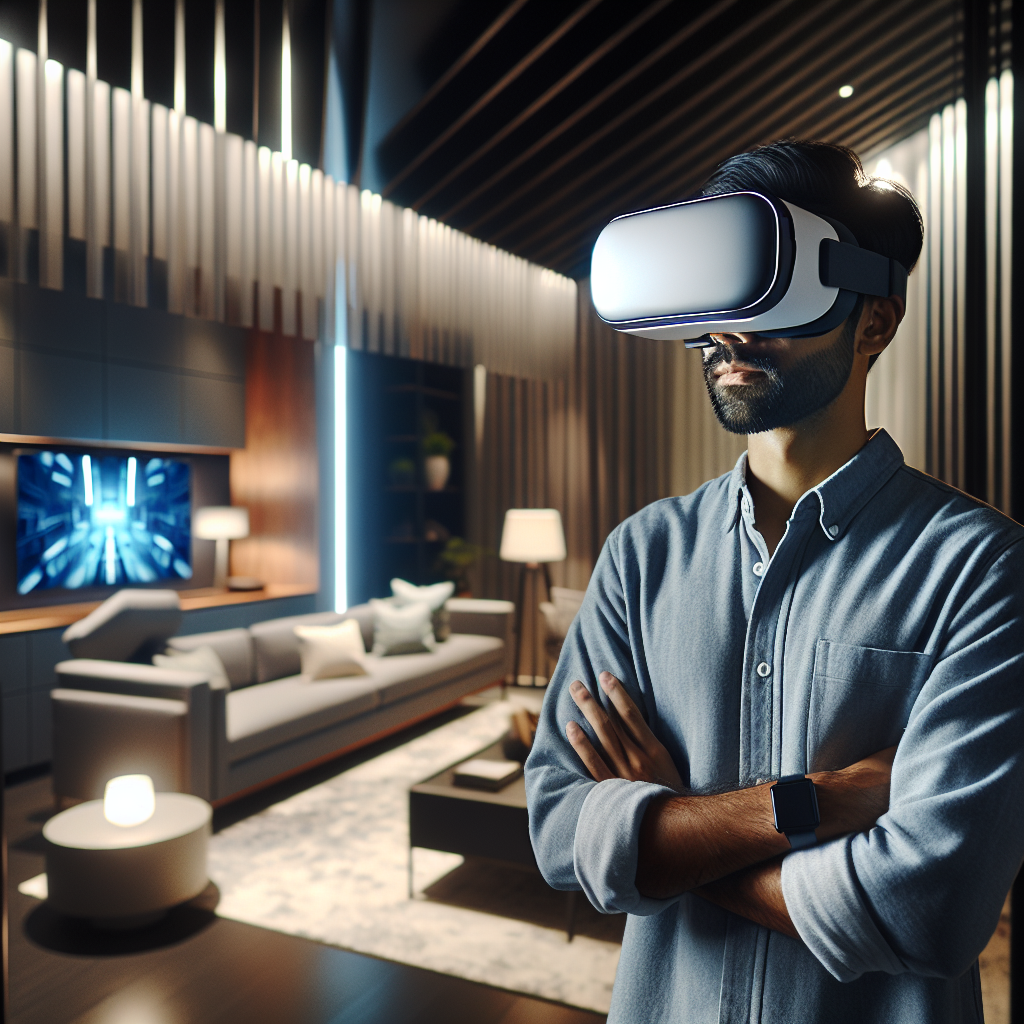Riding the Quantum Wave: A Nostalgic Dive into the Future of Virtual Realities
Step into a mesmerizing journey through the past, present, and future of virtual reality, exploring emerging trends, potential impacts,


As we stand on the precipice of the digital age, it’s impossible not to feel a sense of nostalgia. Our journey, reminiscent of the evolution from bulky room-sized computers to sleek handheld devices, has been nothing short of extraordinary. And as we peek into the future, one technology that promises to redefine our experience is virtual reality (VR).
Today, VR is a playground of possibilities. We have seen its use in gaming, education, and even therapy. But the current state of VR is like a grain of sand on a vast beach, hinting at the magnitude of what’s yet to come.
Three dynamic trends are poised to shape this future. Firstly, breakthrough evolutions in VR technology are making it more immersive and interactive. Advances in haptic feedback systems, for instance, allow users to ‘feel’ virtual objects, collapsing the boundary between the real and virtual.
Secondly, we are witnessing a leverage revolution where VR is being used in unexpected domains. Forget everything you know about entropy – here’s why: VR is turning chaos into order, finding solutions in areas like mental health, where it’s used for exposure therapy, and in space exploration, where it’s used for simulating extraterrestrial environments.
The third and perhaps the most exciting trend is the quantum transformation. Quantum computing, with its superior processing power, is set to upend VR, creating hyper-realistic simulations that are indistinguishable from reality.
These trends aren’t without their disruptions. Traditional industries will need to adapt or risk becoming obsolete. Employment sectors will shift, and new ethical and privacy concerns will arise. But, as history has shown, disruption often paves the way for progress.
Looking ahead, the future of VR seems nothing short of sovereign. As we increasingly blend our physical and digital lives, VR could become as integral as the internet is today. However, this future isn’t guaranteed. It hinges on our ability to adapt and evolve.
The algorithm for this adaptation starts with education and awareness. We need to understand the potential and pitfalls of VR to make informed decisions. Businesses need to recognize VR’s potential and incorporate it into their strategies. And policymakers need to stay abreast of developments to create a regulatory environment that fosters innovation while protecting users.
As we prepare for this VR-dominated metaverse of tomorrow, we need to remember that technology is only as good as the use we put it to. Let’s ensure that we use VR to bring us closer together, foster empathy, and create experiences that are not just immersive but also inclusive.
In conclusion, our AI-driven action plan for the future of VR should be one that is grounded in a clear understanding of its potential and a commitment to use it responsibly. As we look back at our journey and look forward to a future shaped by VR, let’s remember that we are the architects of this groundbreaking horizon. Let’s ride the quantum wave and create a future that’s not just technologically advanced, but also humanely profound.


